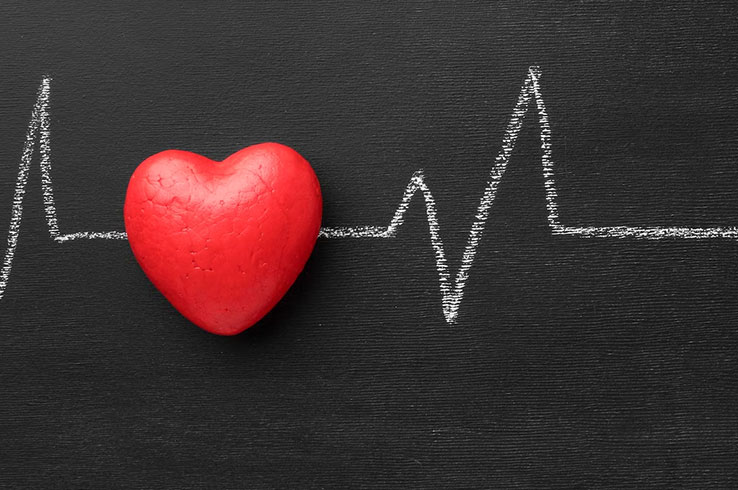Had someone informed me during my high school years that I would eventually conquer a marathon, I would have waved off the idea as preposterous. My cardio endurance back then was far from impressive, and even covering a few laborious miles on the treadmill seemed like an insurmountable challenge. I greatly admired those exceptional individuals, especially the cross-country athletes, who effortlessly demonstrated the capacity to run vast distances.
Nevertheless, as my college years unfolded, I found myself establishing more consistent running routines and steadily pushing the boundaries of the distances I could cover. Eventually, I accomplished the remarkable feat of crossing the marathon finish line. So, what contributed to this remarkable transformation?
A myriad of factors played a pivotal role. Foremost among them was the significant improvement in my cardiovascular endurance. According to Dr. Stacy Sims, a renowned female athlete performance physiologist and esteemed member of the Women’s Health Advisory Board, cardiovascular endurance refers to the capacity to sustain a specific pace or workload without excessively straining the heart. It is a progressive journey, wherein one begins by running at a certain pace for mere minutes, but with time and practice, one can extend their endurance to cover multiple miles.
Cardiovascular endurance serves as a fundamental pillar of overall well-being, transcending the boundaries of mere race courses. In fact, it can be likened to the foundation of the fitness pyramid, as described by Dr. Sims. Developing robust cardiovascular endurance bestows a multitude of potential benefits, ranging from enhancing day-to-day activities to fortifying the body against illness.
Does this ignite your curiosity? I anticipated as much. Therefore, let us delve into a comprehensive understanding of cardiovascular endurance, as imparted by experts. You will discover the most effective strategies for enhancing your endurance, techniques to measure your progress, and the remarkable benefits you will experience both within and beyond the confines of the gym.
How would you define cardiovascular endurance?
To grasp the concept fully, let’s delve into the meaning of cardiovascular endurance. Also referred to as cardiovascular fitness, it denotes the ability to sustain a particular pace or workload without excessively burdening the heart. In essence, it revolves around how effectively you can introduce oxygen into circulation, as explained by Stacy Sims, Ph.D. When engaging in physical exercise, various processes unfold within the body. As you initiate your workout, your heart rate rises to redirect blood from nonessential organs and the digestive system towards crucial areas—primarily the working muscles and the skin, which assists in dissipating the heat generated by the muscles. This blood flow plays several vital roles for the muscles; it eliminates waste products and supplies oxygen for aerobic energy production.
With time, you are able to sustain your pace for more extended periods before experiencing the need to stop and recover. One of the key factors contributing to this progress is the improvement of your cardiovascular endurance. Dr. Sims explains that your heart becomes stronger, and vascularization, which entails an increase in blood vessels, improves as well. This means that your heart can pump blood more efficiently, ensuring that it reaches its intended destination with enhanced effectiveness.
How does cardiovascular endurance contribute to one’s overall well-being?
First and foremost, it is important to emphasize the significance: Developing your cardiovascular endurance has numerous advantages, enabling you to engage in extended periods of exercise (such as consecutive Peloton classes, sprinting through an entire recreational league game, or leading the pack on a lengthy hike). However, the benefits of cardiovascular endurance extend far beyond improved performance. Here are some extra advantages to take into account:
Enhanced sleep: Your fitness level directly correlates with the quality of your sleep, as noted by Sims. In 2010 A study was conducted to investigate the correlation between sleep quality and cardiorespiratory fitness specifically among adolescent girls, aiming to establish a connection between these two factors. The findings revealed that those categorized as “fit” were more likely to report better sleep.
Reduced illness: Higher cardiorespiratory fitness, as per a comprehensive 2018 review, correlates with reduced risk of cardiovascular diseases, hypertension, diabetes, and heart failure, leading to decreased illness. Additionally, as Sims points out, improved sleep also benefits your immune system. In fact, according to an article from Mayo Clinic, individuals who suffer from insufficient quality sleep are more prone to falling ill after being exposed to a virus. Therefore, having good cardiovascular fitness indirectly contributes to a strengthened immune system.
Enhanced daily life: Lastly, Sims highlights that improved cardiovascular fitness positively impacts various simple daily tasks. These tasks include carrying heavy groceries, choosing the stairs over the elevator, keeping up with energetic children, and much more.
In summary, the advantages of cardiovascular endurance extend beyond exercise performance. The advantages comprise better sleep, reduced illness risk, and improved daily functioning ability, as per a concise summary of the benefits.
Which physical activities aid in the development of cardiovascular endurance?
Believe that running is the sole route to cardiovascular excellence? In reality, cross-country skiing and rowing are considered the ultimate methods for developing cardiovascular endurance, as suggested by Sims. Running, cycling, and swimming are also excellent choices.
According to Sims, when multiple muscles are engaged in the movement, it places greater strain on the body, necessitating more blood flow and accelerating the endurance factor. For instance, during rowing, blood must be directed to upper-body muscles, lower-body muscles, and core muscles simultaneously.
Here are some recommended exercise methods to enhance your cardiovascular endurance:
- Cross-country skiing
- Rowing
- Running
- Cycling
- Swimming
- Interval training at a high intensity (HIIT)
It’s worth noting that you don’t have to stick to long, slow sessions exclusively to see improvements. Current research indicates that brief, vigorous periods of exercise may yield greater improvements in cardiovascular health and endurance when compared to longer, continuous workouts. A 2021 review in The Journal of Physiology discovered that low-volume HIIT can produce similar or greater improvements in cardiorespiratory fitness and cardiac function, surpassing high-volume HIIT and moderate-intensity continuous training in various benefits.
Engaging in high-intensity workouts places significant stress on the body, prompting it to adapt rapidly. Varying your running paces during training is also beneficial for reaching your endurance goals. Consider slowing down the pace for long runs to make them enjoyable rather than overly challenging. On the other hand, incorporate shorter track sessions or tempo runs at a faster pace than your goal for race day. This approach trains your body to operate more efficiently at higher speeds, making your marathon pace feel much easier when the time comes.
Remember, finding a balance between different exercise modalities and incorporating variation in intensity can help you maximize your cardiovascular endurance.
What methods can be used to assess cardiovascular endurance?
Discover convenient ways to monitor your cardiovascular endurance at home, as suggested by Sims:
Monthly time trial: If advanced technology isn’t available, perform a monthly 5K run on the same route, noting your pace and perceived exertion. As your endurance improves, expect a decrease in completion time, providing a general indication of progress.
Stay informed about your heart rate: Monitor resting heart rate (RHR) and heart rate variability (HRV) to gain valuable insights into your cardiovascular health and fitness levels, helping you stay on top of your overall well-being. Fitness watches or tracking apps can store these metrics automatically. Alternatively, measure RHR manually using your pulse and a timer, preferably in the morning. Observe weekly or monthly trends but consider limitations due to factors like the menstrual cycle.
By utilizing these DIY methods, gain valuable insights into your cardiovascular endurance progress from the comfort of your home.
What is the typical duration required to enhance cardiovascular endurance?
The timeline for improving cardiovascular endurance depends on your current fitness level. Beginners can expect noticeable improvements by the end of the second week with consistent training, such as increased running duration and lower heart rate. For experienced individuals, it may take a couple of months due to the body’s familiarity with the stress. To expedite progress and maintain motivation, incorporating intervals alongside long, slow sessions is recommended.
How does cardiovascular endurance get affected in the event of an injury?
Luckily, maintaining cardiovascular endurance during an injury doesn’t require extensive effort. Sims suggest incorporating alternative forms of exercise that accommodate the injury while still providing cardiovascular stress. Aim for at least two days per week of such exercises, ensuring they match your usual rate of perceived exertion. If you’re aiming to build endurance post-injury, consider increasing the frequency gradually to avoid further harm. However, it’s crucial to consult your doctor for clearance to exercise and confirm the safety of alternative activities during the recovery process.

